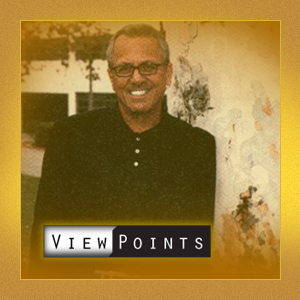Art as a Universal Language
ViewPoints: Journalism and media professor John Eger discusses how art transcends borders.

In the coming decade, the challenge for humanity will be whether we can come to grips with the idea of a world community, shared governance and the notion that the differences between us — the art and culture and wonder and beauty of those differences — must be something we can respect, honor, grow to appreciate and welcome.
In creating art, consciously or not, artists are attempting to communicate at a powerful emotional level to those within their own culture. The best work transcends its cultural matrix and speaks directly to our common humanity.
Already, the world is so inextricably interconnected that cultural and economic isolationism is unthinkable, even if it were desirable. But more needs to done, and perhaps the most effective thing that can be done is to aggressively promote multicultural understanding. By doing so, perhaps, we can create the world community reflective of the world economy in the making.
Given the ubiquitous nature of the World Wide Web, we can use the new technologies — with their powerful capacity for shaping and delivering human interchange — as virtual bridges across the vast distances separating cultures.
Over the last few decades we were witness to a basic change in our modern day world: globalization, the rise the rebirth of the region state, and the resurgence of age old hostilities — racial, tribal and religious strife — that lay just beneath the surface for the last 100 years.
Globalization — something still not understood but feared — has forced us to think about the rest of the world, not just ourselves. For globalization to work, as former President Bill Clinton has observed, we need to be sensitive to the social and political values nation to nation as well as the economic opportunities.
As Thomas Friedman observed in his book of the same name, suddenly The World is Flat.
By the turn of the century and the onset of a new millennium, the Internet changed the way the world communicated with one another around the world, as it changed the structure of the world economy. The World Wide Web wasn't invented until the late 1990s, but by the year 2000, the Net seemed to be growing at 15 percent per month worldwide.
Everybody is now communicating with everyone else; every person, every community is competing with every other ... and in the process, the question is being raised about the future of the world, and of the current geopolitical order.
Friedman calls it Globalization 3.0.
While there are countless disciplines, which might reasonably serve as a means to understanding culture, such as history, sociology, mathematics and science, only art lends itself to the full range of experiential capabilities offered by the new technologies.
This is why art serves so superbly as a universal language — as a means toward understanding the history, culture and values of other peoples. As human beings build virtual bridges into unknown cultural territory — and there learn, share dreams and creatively work together — mankind will know itself as citizens of a rich and truly global society. And if citizens of a global society are to live in peace, goods, services and technical information are exchanged, but values and visions, as well.
It is this new technological marvel that has made the world smaller that compels worldwide debate and discussion, and provides the threshold for the world's greatest assets of art and culture to become the glue for discussion about a New World community. Everybody it seems has an app for almost every human endeavor. Maybe, America — in partnership with other governments and institutions around the world — should create the cultural databases that truly bring people together.
Maybe it is naive to say art is the universal language, and that we can open windows for all to see that we are just folks, and that we are one community. Yet, if art can't, nothing can.



